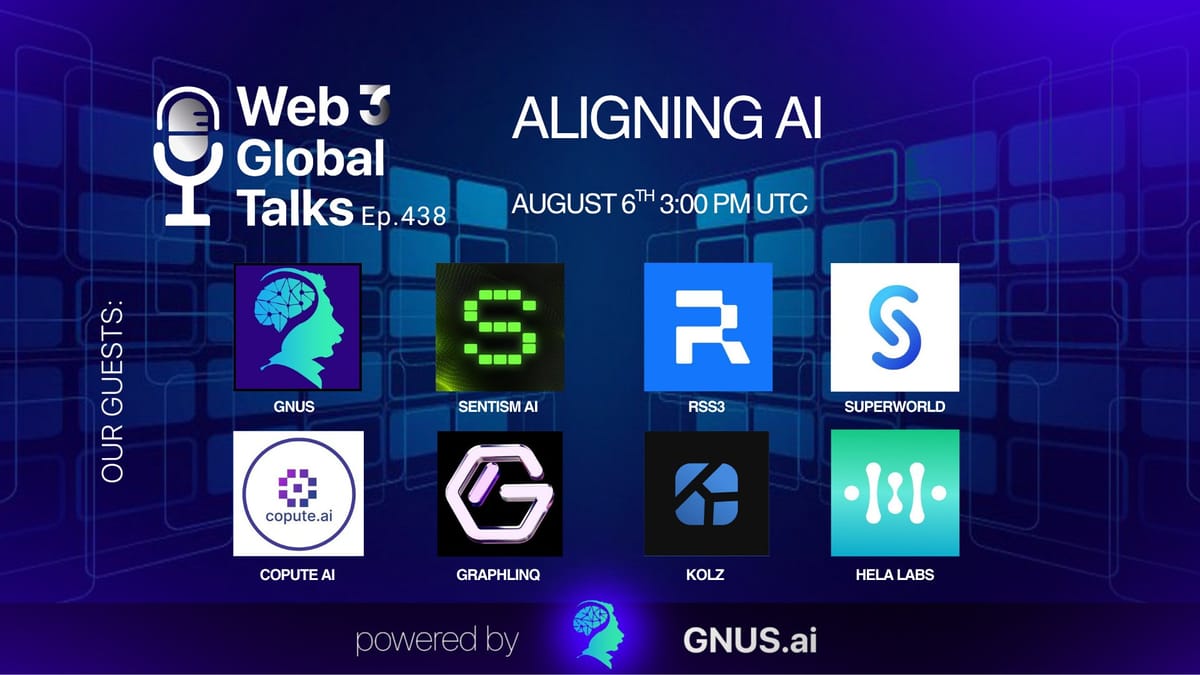AI Alignment, Autonomy, and Global Equity: Thoughts from the GraphLinq CEO
Are we morally obligated to limit AI—even if it stifles potential? Can global values ever align? In this post, I explore the hard truths behind AI ethics, decentralization, and how the GraphLinq community can help build fair, accountable tech.

During a recent Twitter Spaces interview, I was asked two questions that cut right to the core of where AI is headed—and more importantly, where we fit in as builders, leaders, and a global community:
1. Are we morally obligated to limit the autonomy of AI systems, even if that stifles their potential?
2. Can you ever truly “align” an AI system whose values are shaped by decentralized, global, and often conflicting communities, while also ensuring developing nations are not left behind?
As someone who leads a blockchain project that embraces decentralization and automation—GraphLinq Chain—these questions don’t live in the abstract for me. They’re real, present, and central to the systems we're building. So let me unpack my thoughts, not just as a technologist, but as someone who believes in putting people before hype.
Yes, We Must Limit AI Autonomy—At Least Until It's Accountable
I’m all for pushing the limits of what’s possible. Innovation is what drives us, especially in communities like ours at GraphLinq. But there’s a line—and when it comes to AI, that line is human safety, dignity, and sovereignty.
We aren’t dealing with tools anymore. We’re dealing with systems that can shape people’s realities—what they see, what they believe, and even what they fear. When an AI becomes autonomous in its decision-making, and that autonomy is disconnected from human oversight, the risk isn’t theoretical. It’s right now.
Here’s the kicker: machine autonomy isn’t the same as human autonomy. People are conscious, self-aware, and morally accountable. Machines aren’t. So the idea that we should give AI "freedom" in the same way we value our own freedom is a category error. If we let autonomy run wild in systems that aren’t even moral agents, then yes—we are absolutely morally obligated to step in and say, “Not yet.”
And if that slows progress? Good. Progress without responsibility is just acceleration toward a wall.
AI Alignment Will Never Be Universal—But It Can Be Pluralistic
Now the second question hit just as hard: Can we align AI to values that are decentralized, global, and often contradictory? And how do we make sure developing nations aren’t left behind?
Let me be blunt: You can’t fully align AI to “global values” because no such thing exists. What counts as respectful, fair, or just in one culture may be offensive or oppressive in another. There is no alignment utopia coming—not if it means one-size-fits-all.
What we can do is create pluralistic systems—AI that adapts contextually, that responds to local laws, languages, and lived experiences. And we can insist on transparent, verifiable tooling for how alignment choices are made.
This is exactly why GraphLinq matters in the larger conversation.
We’re building automation with accountability—smart systems that can be customized, audited, and deployed by real people without writing a line of code. If AI is the engine, GraphLinq is the steering wheel, the dashboard, and the seatbelt. We give communities—especially smaller, underserved ones—the power to control how automation enters their world.
And let me say this directly to the GraphLinq community: We’re not just here to build cool tech. We’re here to build fair tech. Tech that doesn’t forget the Global South. Tech that doesn’t default to English. Tech that doesn’t assume everyone wants what Silicon Valley wants.
If we do this right, AI doesn’t have to be a centralizing force. It can be a liberating one.
In Closing: Build With Care
The road ahead for AI isn’t just about faster models or more parameters. It’s about values. Responsibility. Equity. And yes—limits.
The GraphLinq community gets this. You’ve already shown what’s possible when power is decentralized, transparent, and shared. Now we need to bring that mindset into the AI space—before the window to shape it closes.
Let’s keep building. But let’s build with care.
—
John R. Bussiculo [jr00t]
CEO, GraphLinq Chain
